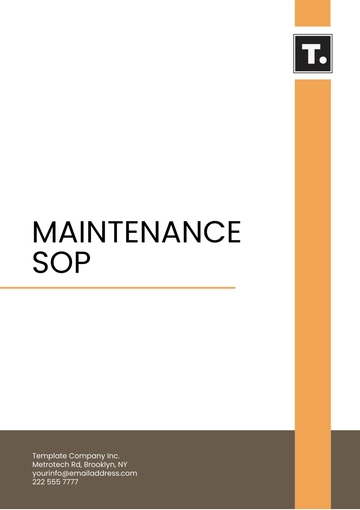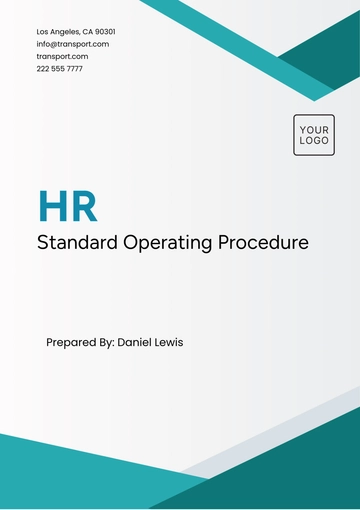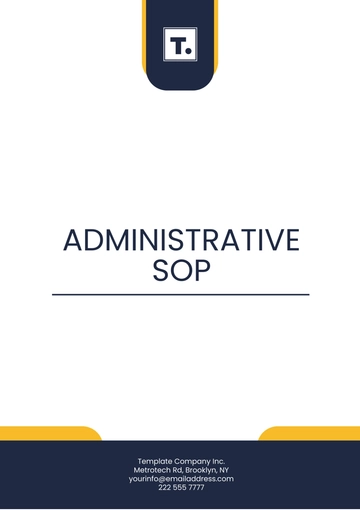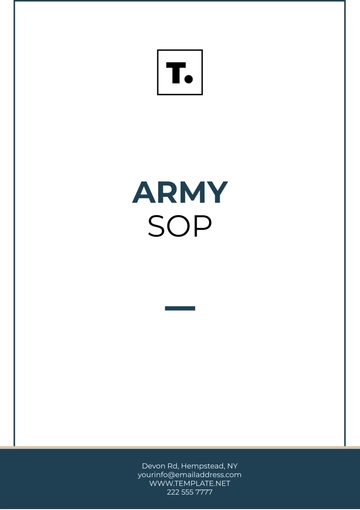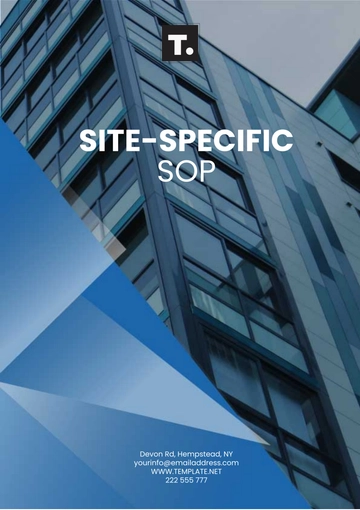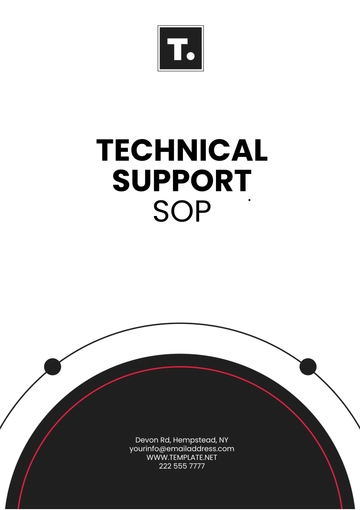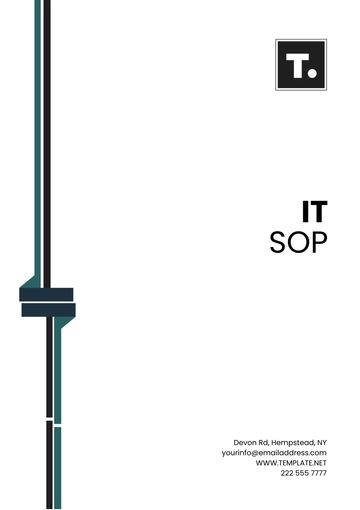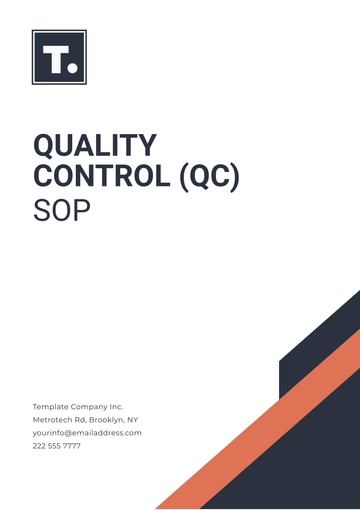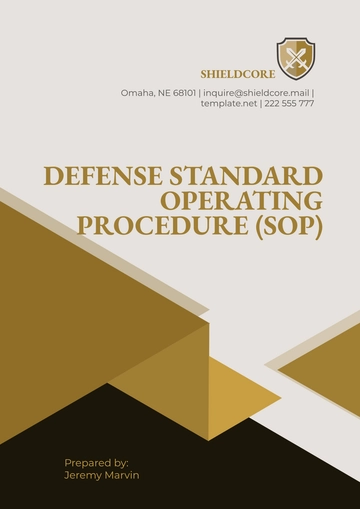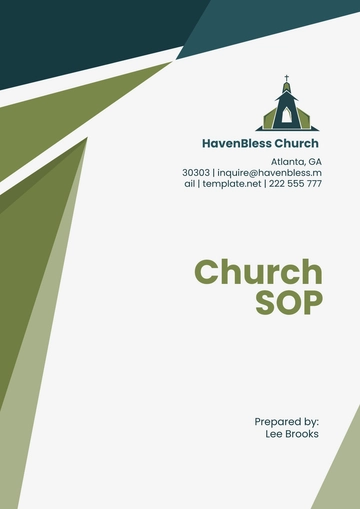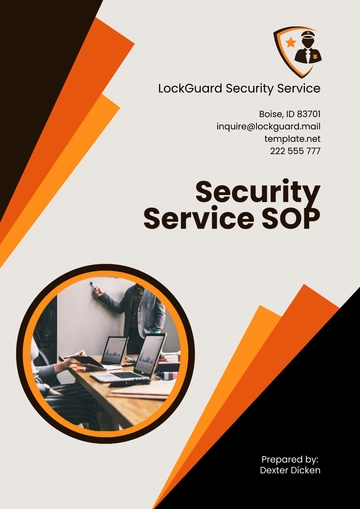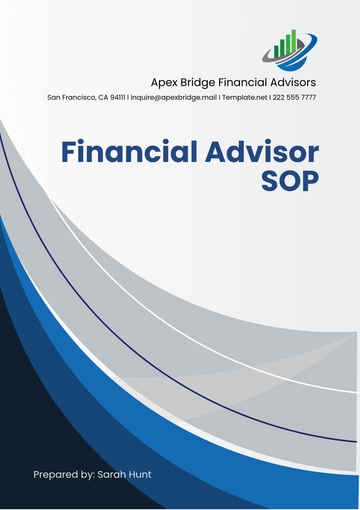Free Travel Agency Safety SOP
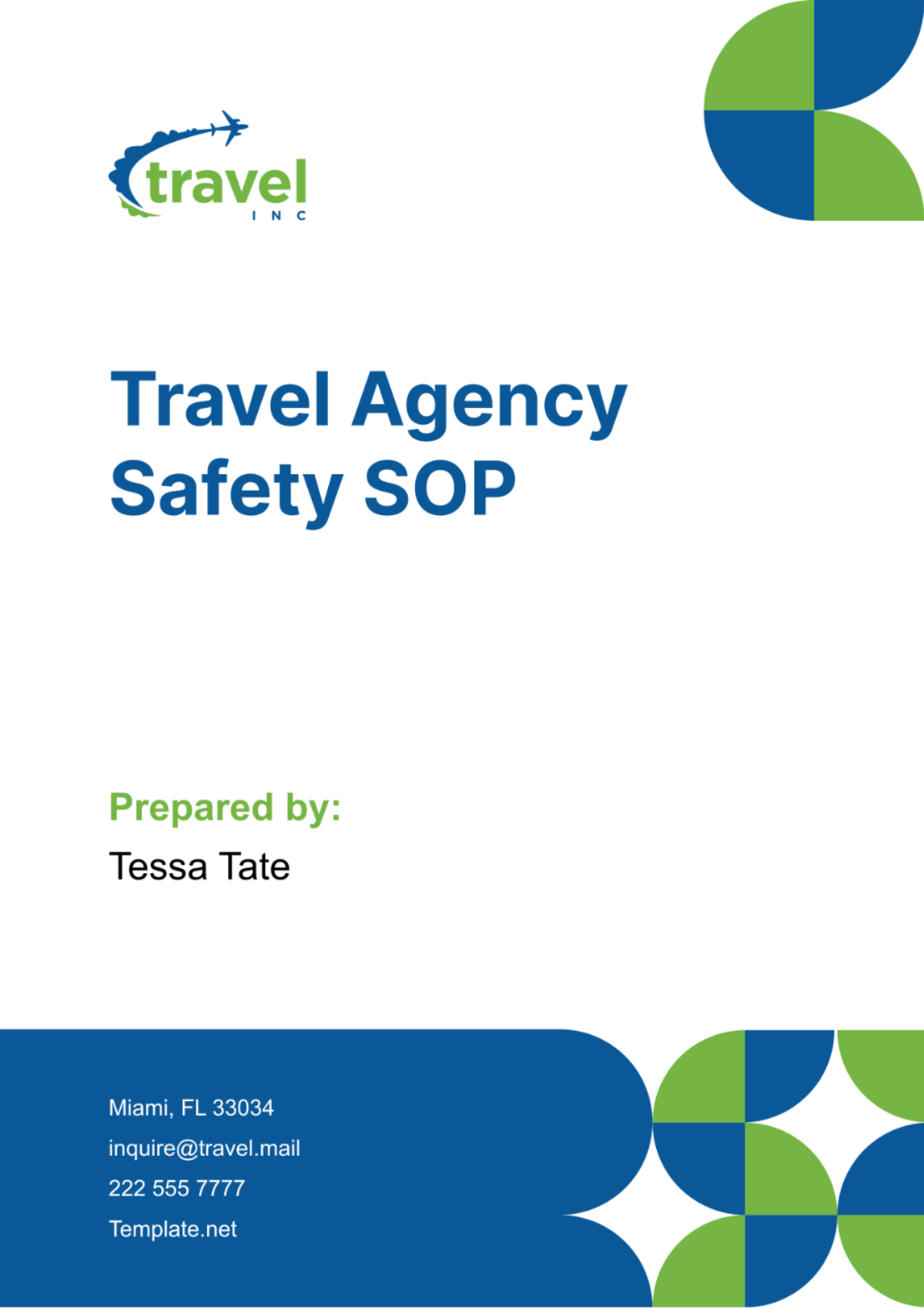
I. Introduction
A. Purpose of the SOP
The purpose of this Travel Agency Safety Standard Operating Procedure (SOP) is to establish clear guidelines and protocols to ensure the safety and well-being of travelers, employees, and assets associated with [Your Company Name]. By standardizing safety procedures, we aim to minimize risks, enhance emergency preparedness, and maintain the trust and confidence of our clients.
B. Scope and Applicability
This SOP applies to all employees of [Your Company Name], regardless of their role or position, involved in any aspect of travel planning, booking, or customer service. It also extends to all individuals utilizing the services of the agency, including clients, customers, and travelers. Compliance with this SOP is mandatory for all staff and travelers associated with [Your Company Name].
C. Definitions of Key Terms
Traveler: Any individual who engages with [Your Company Name] for the purpose of booking travel arrangements, including clients, customers, and passengers.
Employee: Any individual employed by [Your Company Name], including full-time, part-time, and contracted personnel, involved in travel-related activities.
Emergency: Any unforeseen event or situation that poses an immediate threat to the safety or well-being of travelers, employees, or agency assets, requiring prompt and decisive action.
II. Risk Assessment and Management
A. Identification of Potential Risks
Natural Disasters: These include events such as earthquakes, hurricanes, floods, and tsunamis, which may vary in likelihood and severity depending on the destination.
Political Instability: Civil unrest, riots, strikes, and political tensions can pose risks to traveler safety, especially in regions with unstable governments or ongoing conflicts.
Health Hazards: Outbreaks of infectious diseases, pandemics, and public health emergencies require careful monitoring and proactive measures to protect travelers' health and well-being.
Terrorism and Security Threats: Acts of terrorism, violence, and security incidents may occur unexpectedly, necessitating heightened security measures and contingency plans.
Transportation Accidents: Risks associated with air, sea, and land transportation include accidents, mechanical failures, and disruptions in service that could impact travelers' safety.
B. Assessment of Risk Severity and Likelihood
Risk Severity: Risks will be categorized based on their potential impact on traveler safety and business operations, ranging from minor inconveniences to severe threats.
Risk Likelihood: The probability of each risk occurring will be assessed based on historical data, expert analysis, and current conditions, enabling prioritization of mitigation efforts.
C. Strategies for Risk Mitigation and Control
Destination-Specific Risk Assessments: Prior to promoting or booking travel to a particular destination, comprehensive risk assessments will be conducted to identify potential hazards and develop appropriate mitigation strategies.
Timely Communication: Providing travelers with up-to-date information and travel advisories, including alerts and warnings issued by government agencies and international organizations.
Alternative Travel Options: Offering flexible booking options and alternative travel arrangements in case of high-risk situations or unexpected disruptions.
Contingency Planning: Developing contingency plans and emergency response protocols tailored to different types of risks and scenarios, ensuring readiness to respond effectively to emergencies.
D. Monitoring and Review of Risk Management Measures
Continuous Monitoring: Regular monitoring of global and local developments, including news updates, travel advisories, and intelligence reports, to stay informed about emerging risks and threats.
Regular Review: Periodic review and reassessment of risk management measures, including the effectiveness of mitigation strategies and the appropriateness of contingency plans, to ensure ongoing readiness and adaptability.
Post-Travel Evaluation: Conducting post-travel evaluations and debriefings to assess the effectiveness of risk mitigation measures and identify areas for improvement based on real-world experiences and lessons learned.
III. Emergency Response Plan
A. Roles and Responsibilities of Personnel During Emergencies
Emergency Response Teams: Designating specific personnel or teams responsible for coordinating emergency response efforts and implementing predefined protocols.
Role Assignments: Clearly defining roles and responsibilities for each member of the emergency response teams, including leadership roles, communication liaisons, first aid responders, and evacuation coordinators.
Training and Preparedness: Providing comprehensive training and ongoing drills to ensure that all employees are familiar with their roles and responsibilities and are prepared to respond effectively to emergencies.
B. Procedures for Reporting Emergencies
Immediate Reporting: Establishing clear and efficient channels of communication for reporting emergencies, including emergency contact numbers, dedicated communication apps, and in-person protocols.
Chain of Command: Implementing a hierarchical system for reporting emergencies, with designated points of contact responsible for escalating the situation to higher levels of authority as necessary.
Documentation: Maintaining detailed records of all reported emergencies, including the nature of the incident, actions taken, and outcomes, to facilitate post-incident analysis and continuous improvement.
C. Evacuation Procedures
Evacuation Plans: Developing comprehensive evacuation plans for different types of emergencies, including fires, natural disasters, security threats, and medical emergencies.
Evacuation Routes: Identifying primary and alternative evacuation routes from agency premises, travel destinations, accommodations, and transportation facilities, with clearly marked exit points and assembly areas.
Drills and Training: Conducting regular evacuation drills and training exercises to familiarize employees and travelers with evacuation procedures and ensure rapid and orderly evacuation in emergency situations.
D. Communication Protocols with Travelers, Authorities, and Stakeholders
Traveler Communication: Establishing protocols for communicating with travelers during emergencies, including providing timely updates, instructions, and assistance via multiple channels such as email, SMS, mobile apps, and social media.
Coordination with Authorities: Establishing communication channels with local authorities, emergency services, embassies or consulates, and other relevant stakeholders to coordinate emergency response efforts and obtain assistance as needed.
Stakeholder Engagement: Communicating proactively with stakeholders such as travel suppliers, partners, and regulatory agencies to exchange information, coordinate response efforts, and ensure alignment with external resources and support.
E. Emergency Contacts and Resources
Emergency Contact List: Compiling a comprehensive list of emergency contact numbers for local authorities, emergency services, medical facilities, transportation providers, embassies or consulates, and other relevant resources.
Resource Database: Maintaining a database of emergency resources and assistance services available to travelers, including medical facilities, evacuation services, legal assistance, and consular support, with up-to-date contact information and service descriptions.
IV. Health and Safety Guidelines
A. Pre-Travel Health Advice for Travelers
Providing travelers with comprehensive pre-travel health advice, including information on required and recommended vaccinations, health precautions specific to their destination, and potential health risks such as food and water safety.
Offering guidance on personal hygiene practices, such as handwashing and sanitization, to reduce the risk of contracting infectious diseases during travel.
Advising travelers with pre-existing medical conditions to consult with their healthcare provider before traveling and to carry an adequate supply of necessary medications.
B. Recommendations for Vaccinations and Preventive Measures
Collaborating with healthcare professionals and public health authorities to stay updated on the latest vaccination recommendations for travel destinations and emerging infectious diseases.
Encouraging travelers to receive vaccinations and preventive measures recommended for their destination well in advance of their travel dates to ensure optimal protection.
Providing information on additional preventive measures, such as insect repellents, bed nets, and protective clothing, to reduce the risk of vector-borne diseases like malaria and dengue fever.
C. Guidance on Travel Insurance and Medical Assistance Options
Advising travelers to obtain comprehensive travel insurance that includes coverage for medical emergencies, trip cancellations, and other unforeseen events.
Providing information on medical assistance options available to travelers, including local healthcare facilities, medical evacuation services, and 24/7 emergency assistance hotlines.
Assisting travelers in understanding the terms and coverage limits of their travel insurance policies and facilitating the claims process in the event of a medical emergency or travel-related incident.
D. Protocols for Managing Medical Emergencies During Travel
Establishing procedures for responding to medical emergencies during travel, including accessing emergency medical services, arranging medical evacuations, and providing first aid and basic life support as needed.
Training employees on recognizing signs and symptoms of common travel-related illnesses and injuries and administering appropriate first aid interventions.
Coordinating with local healthcare providers, hospitals, and medical facilities to ensure timely and appropriate medical care for travelers in need of assistance.
V. Security Measures
A. Protection of Sensitive Information and Data Security
Implementing robust data protection measures to safeguard sensitive information collected from travelers, including personal and financial data, in compliance with data privacy regulations.
Utilizing secure communication channels, encryption protocols, and access controls to prevent unauthorized access, disclosure, or misuse of sensitive information.
Conducting regular security audits and assessments to identify vulnerabilities and address potential security risks proactively.
B. Measures to Prevent Theft, Fraud, and Unauthorized Access
Implementing physical security measures to protect agency premises, equipment, and assets from theft, vandalism, and unauthorized entry, including surveillance systems, access controls, and security personnel.
Establishing procedures for securely handling cash, credit card transactions, and sensitive financial information to prevent fraud and unauthorized transactions.
Educating employees and travelers on security best practices, such as safeguarding valuables, maintaining awareness of surroundings, and reporting suspicious activities or individuals.
C. Security Protocols for Online Transactions and Electronic Communications
Implementing secure payment processing systems and encryption protocols to protect online transactions and financial data from cyber threats, such as hacking and identity theft.
Providing guidance to employees on safe internet browsing practices, password management, and email security to reduce the risk of phishing scams, malware infections, and other cyber attacks.
Conducting regular security awareness training sessions to educate employees about the latest cyber threats and reinforce security best practices for online transactions and electronic communications.
D. Procedures for Handling Security Incidents
Establishing protocols for responding to security incidents, including breaches of physical security, cyber security incidents, and suspected criminal activities.
Designating personnel responsible for investigating security incidents, documenting findings, and coordinating with law enforcement agencies and regulatory authorities as necessary.
Implementing measures to mitigate the impact of security incidents, restore normal operations, and prevent recurrence through corrective actions and security enhancements.
VI. Training and Education
A. Training Programs for Employees on Safety Procedures and Protocols
Developing comprehensive training programs for employees to ensure they are familiar with safety procedures, emergency response protocols, and security measures relevant to their roles and responsibilities.
Providing specialized training for employees in key areas such as first aid, CPR, fire safety, evacuation procedures, and crisis management to enhance their readiness to respond effectively to emergencies.
Conducting regular refresher training sessions and skill assessments to reinforce knowledge and skills and ensure ongoing compliance with safety standards and protocols.
B. Awareness Campaigns for Travelers on Safety Measures and Emergency Preparedness
Developing educational materials and resources for travelers to promote awareness of safety measures, health precautions, and emergency preparedness tips relevant to their destinations and travel activities.
Distributing safety information through multiple channels, including pre-travel communications, website content, social media posts, and in-person briefings, to reach a wide audience of travelers.
Encouraging travelers to take personal responsibility for their safety and well-being by providing guidance on situational awareness, risk avoidance strategies, and emergency response procedures.
C. Ongoing Education and Updates on Safety-Related Topics
Establishing mechanisms for sharing timely updates and relevant information with employees and travelers about emerging safety risks, travel advisories, and regulatory changes affecting travel safety.
Providing access to training resources, online courses, and educational materials on safety-related topics through the agency's intranet, learning management system, or other digital platforms.
Encouraging employees to participate in professional development opportunities, conferences, and workshops related to travel safety, risk management, and emergency preparedness to stay informed and up-to-date on industry best practices.
VII. Compliance with Regulations
A. Adherence to Relevant Safety Regulations and Industry Standards
Ensuring compliance with applicable safety regulations, industry standards, and best practices governing travel agencies, including those related to emergency preparedness, consumer protection, data privacy, and security.
Monitoring regulatory developments and updates from government agencies, industry associations, and other relevant authorities to ensure timely implementation of new requirements and changes.
Conducting periodic reviews and audits to assess compliance with regulatory requirements and identify areas for improvement or corrective action.
B. Compliance with Legal Requirements Related to Travel Safety and Security
Maintaining awareness of legal obligations and responsibilities related to travel safety, security, and duty of care owed to travelers under applicable laws and regulations.
Establishing policies and procedures to ensure compliance with legal requirements for risk assessment, emergency response planning, health and safety standards, and security measures.
Consulting with legal advisors and regulatory experts to address legal concerns, interpret regulatory requirements, and mitigate legal risks associated with travel agency operations.
C. Documentation and Record-Keeping Requirements
Establishing protocols for documenting and maintaining records of safety-related activities, including risk assessments, emergency response plans, training sessions, incident reports, and compliance documentation.
Implementing secure record-keeping systems and data management practices to ensure the integrity, confidentiality, and accessibility of safety-related records and documentation.
Retaining records in accordance with applicable legal requirements and industry standards, including retention periods and disposal procedures for sensitive or confidential information.
VIII. Communication Protocols
A. Channels of Communication for Travelers, Employees, and Stakeholders
Establishing clear and reliable channels of communication for disseminating safety information, alerts, updates, and instructions to travelers, employees, and stakeholders.
Utilizing multiple communication channels, including email, SMS, mobile apps, social media, website notifications, and voice messaging, to reach travelers and stakeholders in diverse locations and situations.
Providing contact information for dedicated communication channels and emergency hotlines to facilitate rapid communication and assistance during emergencies or urgent situations.
B. Protocols for Disseminating Safety Information and Alerts
Developing standardized templates and messaging protocols for communicating safety information, travel advisories, and emergency alerts to travelers and employees.
Establishing procedures for verifying the accuracy and reliability of safety information before dissemination to ensure that travelers receive timely and credible updates.
Coordinating with relevant authorities, government agencies, and industry partners to obtain authoritative information and align messaging with official guidance and recommendations.
C. Procedures for Coordinating Communication During Emergencies
Establishing protocols for coordinating communication efforts with emergency response teams, local authorities, government agencies, and other stakeholders during emergencies.
Designating communication liaisons and establishing communication hubs to facilitate information exchange, coordination of response efforts, and collaboration with external partners.
Implementing backup communication systems and redundancy measures to ensure continuity of communication in the event of infrastructure failures or disruptions.
IX. Continuous Improvement
A. Evaluation of the Effectiveness of Safety Procedures
Conducting regular assessments and reviews of safety procedures, emergency response plans, and security measures to evaluate their effectiveness in mitigating risks and addressing safety concerns.
Utilizing feedback from employees, travelers, and stakeholders to identify areas for improvement, address gaps in safety protocols, and implement corrective actions as needed.
Monitoring key performance indicators (KPIs) related to safety and security metrics, such as incident rates, response times, and compliance levels, to measure the effectiveness of safety procedures and track progress over time.
B. Feedback Mechanisms for Travelers and Employees
Establishing mechanisms for soliciting feedback from travelers and employees on their experiences with safety procedures, emergency response protocols, and security measures.
Providing multiple channels for submitting feedback, including surveys, suggestion boxes, online forums, and direct communication with management, to encourage open and transparent communication.
Analyzing feedback received from travelers and employees to identify trends, patterns, and recurring issues, and using this information to inform decision-making and continuous improvement efforts.
C. Review and Revision of the SOP Based on Lessons Learned and Best Practices
Conducting regular reviews and updates of the Travel Agency Safety SOP based on lessons learned from incidents, near misses, and feedback received from stakeholders.
Incorporating best practices, industry standards, and regulatory changes into the SOP to ensure that safety procedures remain current, effective, and aligned with evolving threats and challenges.
Engaging stakeholders in the review and revision process to solicit input, gather insights, and foster collaboration in enhancing safety and security measures across the organization.
- 100% Customizable, free editor
- Access 1 Million+ Templates, photo’s & graphics
- Download or share as a template
- Click and replace photos, graphics, text, backgrounds
- Resize, crop, AI write & more
- Access advanced editor
Optimize travel safety with the Travel Agency Safety SOP Template from Template.net. This editable and customizable SOP comes with an AI Editor Tool, ensuring effortless customization to meet your agency's unique needs. With comprehensive sections covering risk assessment, emergency response plans, and continuous improvement, enhance safety protocols effortlessly and efficiently.




